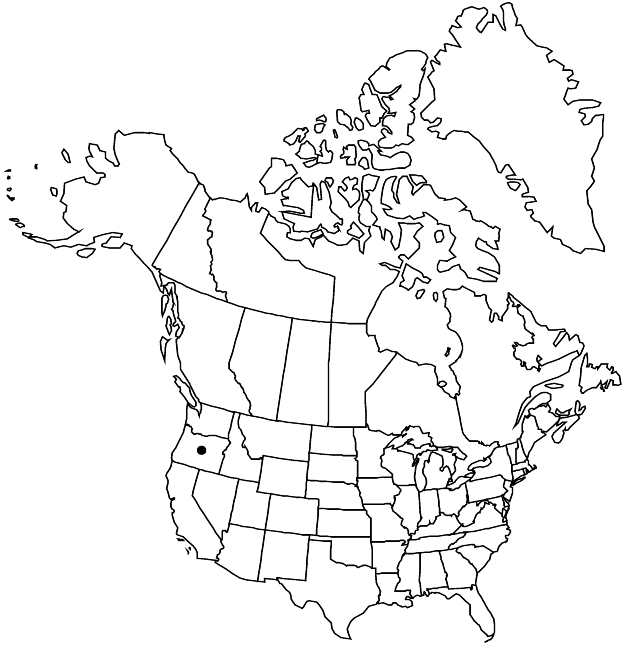Polygonum cascadense
Madroño 10: 62, plate 1, fig. 1. 1949.
Herbs. Stems spreading to erect, zigzagged, green, simple or branched from base, wiry, 5–12(–15) cm, glabrous. Leaves uniformly distributed, articulated to ocreae, basal leaves persistent, distal leaves abruptly reduced to bracts; ocrea 2–5 mm, glabrous, proximal part funnelform, distal part lacerate; petiole essentially absent; blade 1-veined, not pleated, oblanceolate to obovate, 5–20 × 2–5 mm, margins revolute, never touching along midrib, sparsely papillose-denticulate, apex rounded or apiculate. Inflorescences axillary and terminal, spikelike, dense; cymes congested at tips of stems and branches, 3–5-flowered. Pedicels enclosed in ocreae, erect to spreading, 2–3 mm. Flowers open; perianth 2–2.5 mm; tube 12–25% of perianth length; tepals overlapping, uniformly white, petaloid, oblong to obovate, cucullate, navicular in distal 1/4, apex rounded; midveins unbranched; stamens 8. Achenes enclosed in or exserted from perianth, black, ovate to ovate-oblong, 1.8–2.1 mm, faces subequal, shiny, smooth.
Phenology: Flowering Jun–Sep.
Habitat: Dry, usually rocky slopes, often on serpentine
Elevation: 1600-1800 m
Discussion
Selected References
None.
